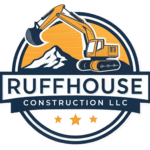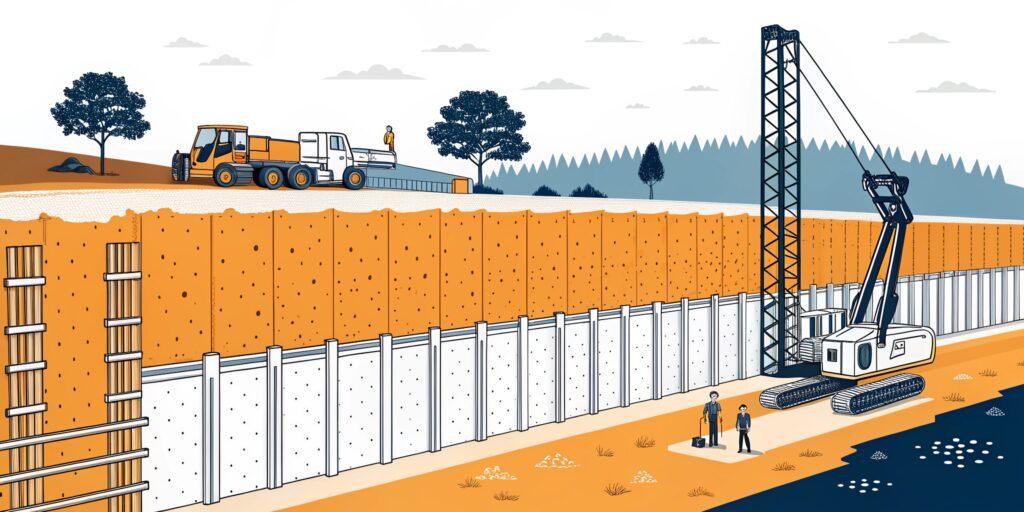Understand soldier pile and lagging panel systems
When you need a robust method for deep cuts, soldier pile and lagging offers proven stability. This excavation support systems approach uses vertical steel beams (soldier piles) and horizontal lagging panels to shore trench walls.
Soldier pile wall basics
Soldier piles are H-shaped steel beams driven into the ground at regular intervals. They carry soil loads back to stable strata and form the backbone of your shoring. For detailed design criteria, see soldier pile wall construction.
Lagging panel fundamentals
Lagging panels—often timber, steel or precast concrete—fit between soldier piles. They transfer soil pressure to the piles and keep the excavation face intact. Explore material options on our lagging panel material options page.
Assess site conditions
Before selecting equipment, map out:
- Soil type and stability
- Groundwater levels
- Excavation depth and length
- Nearby structures or utilities
That’s why you’ll often use ground-penetrating radar or borehole data to pinpoint soil layers. A clear site profile guides your equipment choice and budget.
Select suitable excavation shoring equipment
Match your system to job demands by weighing cost, soil conditions and crew experience. Here’s how to narrow options:
Choosing soldier piles
- Beam size and spacing based on load capacity
- Corrosion-resistant coatings for long-term projects
- Compatibility with existing excavators
Selecting lagging panels
- Timber for cost-sensitive sites
- Steel or precast for heavy loads
- Panel dimensions that fit your pile spacing
A table can help compare options:
| Feature | Timber lagging | Steel lagging | Precast concrete |
|---|---|---|---|
| Cost | Low | Medium | High |
| Load capacity | Moderate | High | Very high |
| Installation speed | Fast | Fast | Moderate |
Follow the installation steps
A clear process keeps work on schedule and within safety guidelines.
- Position and drive soldier piles per engineered layout
- Verify plumb and alignment before moving on
- Insert and secure lagging panels one level at a time
- Install struts or walers if specified in design
By sticking to the lagging panel installation process, you minimize delays and maintain trench integrity.
Ensure safety and compliance
Safety isn’t optional. You must follow OSHA standards and local rules found under excavation shoring regulations. Key measures include:
- Regular trench inspections by a competent person
- Proper shoring height and bracing checks
- Emergency egress ladders every 25 feet
- Daily safety audits and toolbox talks
These steps prevent cave-ins and keep your crew safe.
Maintain your shoring
Even after installation, your system needs attention:
- Inspect piles and panels after heavy rain or freeze-thaw cycles
- Tighten or replace struts showing wear
- Monitor settlement near adjacent structures
- Schedule follow-up safety reviews
Routine checks extend system life and reduce downtime.
Why choose RuffHouse Construction LLC
- Local expertise in WA/OR ensures quick permits and reliable crews
- Proven track record with over 200 successful installations in the Pacific Northwest
- End-to-end service from site assessment through system removal
- Responsive support for design changes or emergency repairs
Frequently asked questions
1. When should I choose soldier pile and lagging over sheet piles?
If you need deep excavation in tight urban sites, soldier piles adapt better to confined conditions.
2. How do I know my lagging panels fit correctly?
You’ll confirm fit by checking pile spacing and panel dimensions against the engineered plan.
3. Can I reuse lagging panels on multiple projects?
Yes, with proper inspection and maintenance, steel and precast panels last for years.
4. What training do crews need for this system?
Crews should complete excavation shoring training covering OSHA Subpart P and equipment handling.
5. How soon can I remove the shoring after backfill?
Typically you strip panels and piles once backfill compaction meets design specs—often within days of filling.
When you’re ready to discuss your next excavation, contact RuffHouse Construction LLC for a tailored plan and on-time delivery.
Ready to start your own soldier pile wall project in Seattle, Tacoma, or anywhere in Puget Sound?
Learn how Ruffhouse Construction delivers safe, code-compliant soldier pile and lagging wall installations for any site.
See our Soldier Pile Installation Services for details and request a free estimate today.

